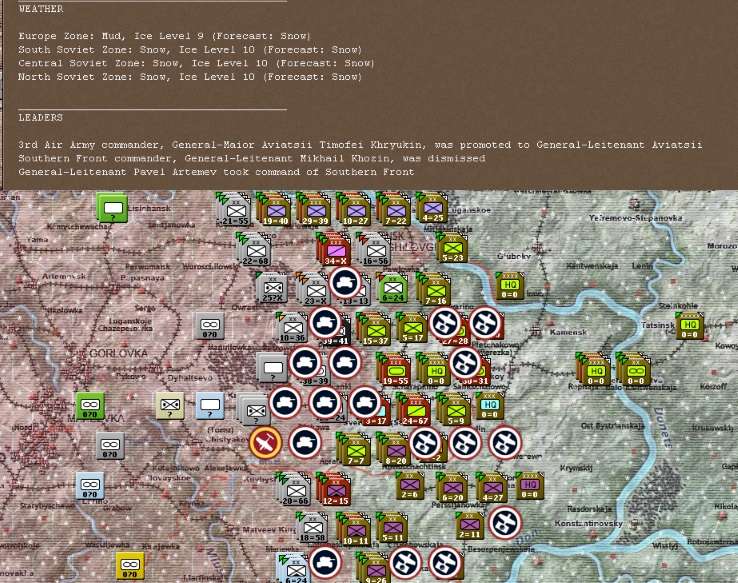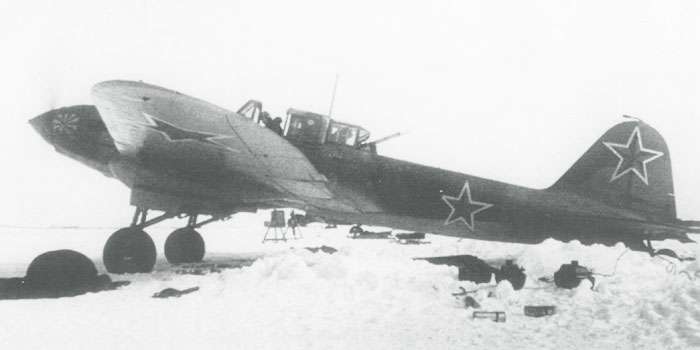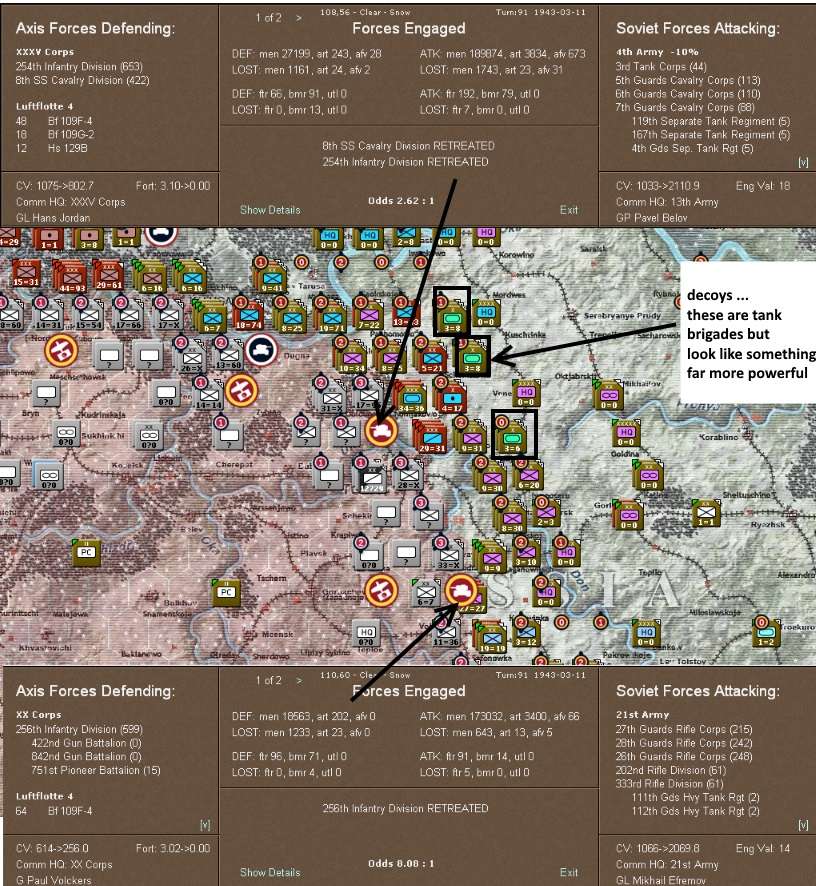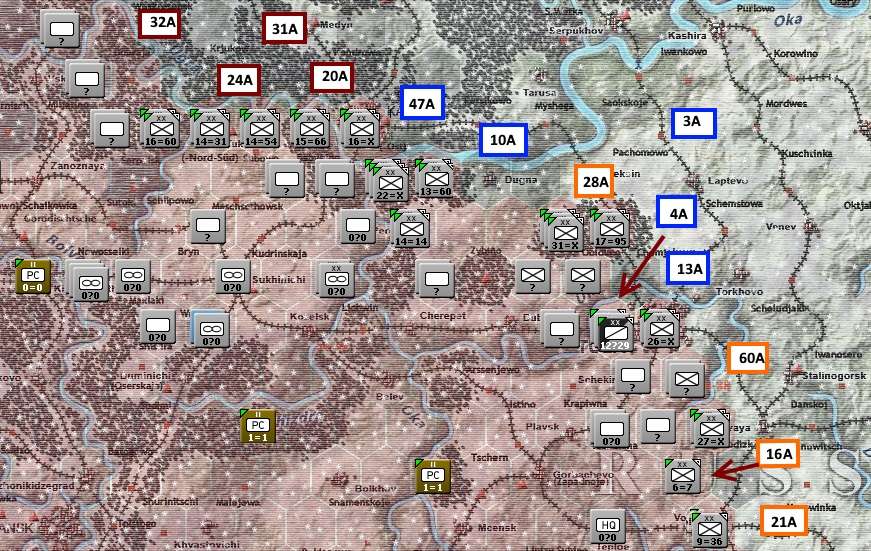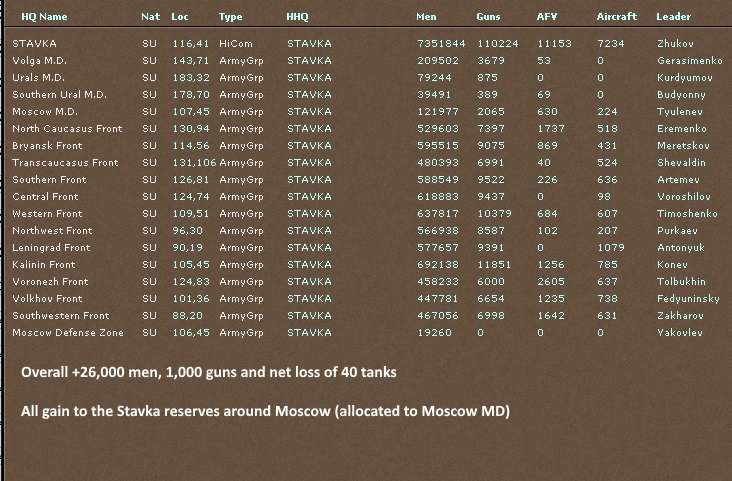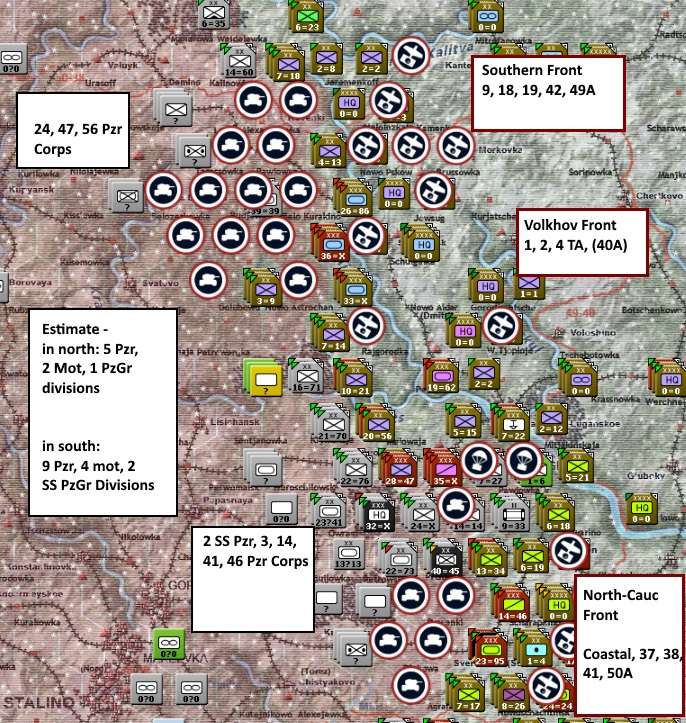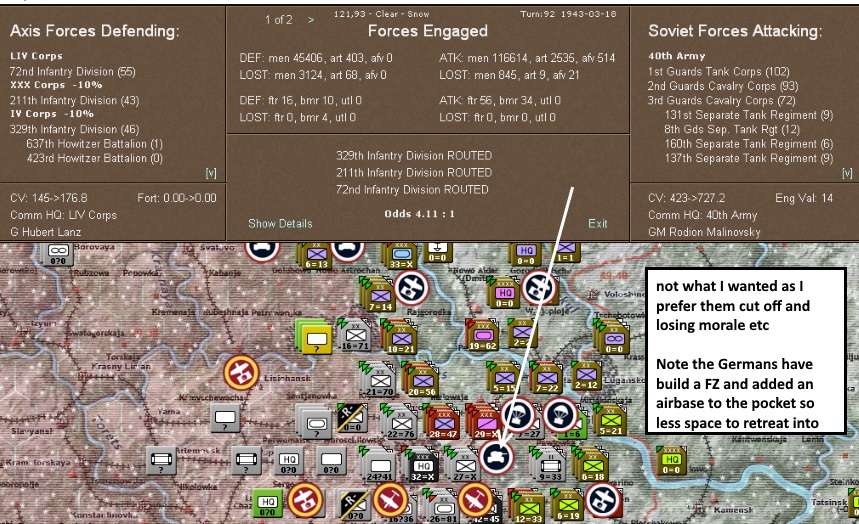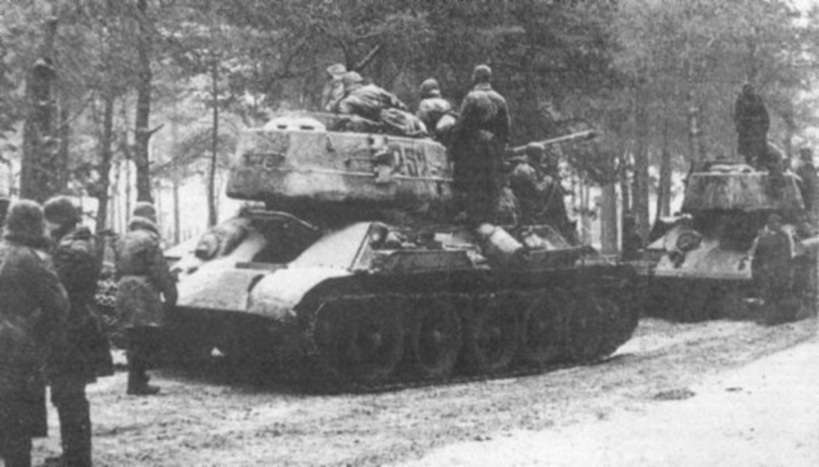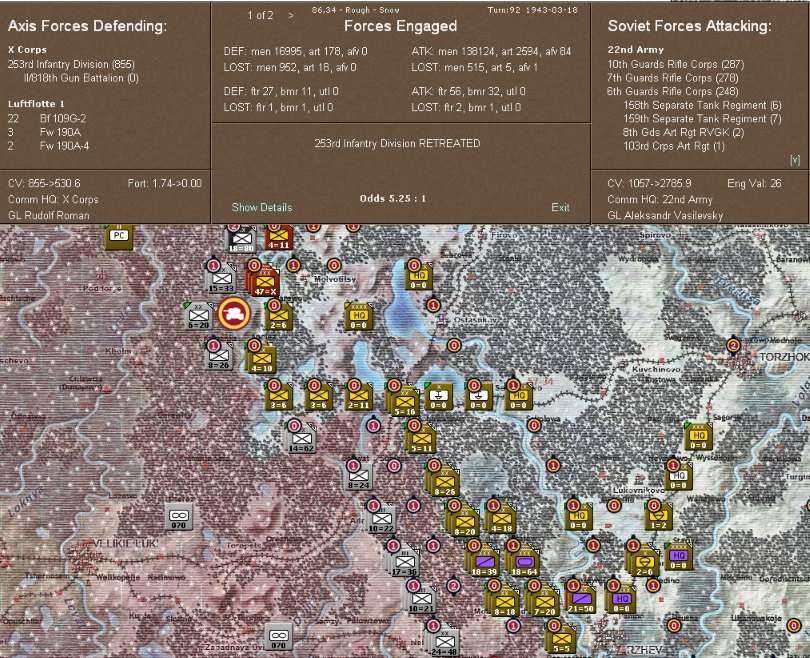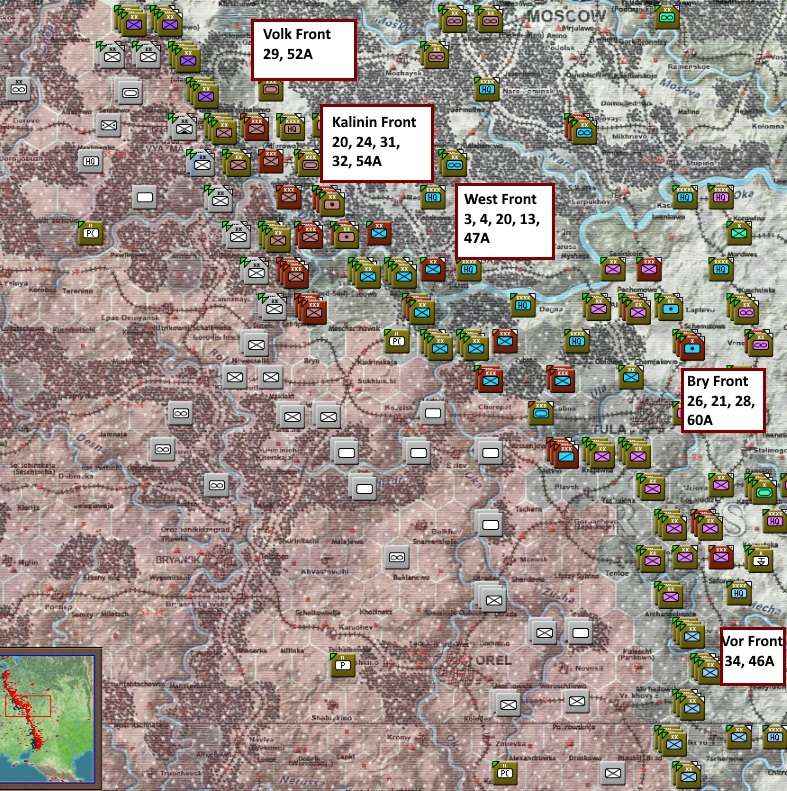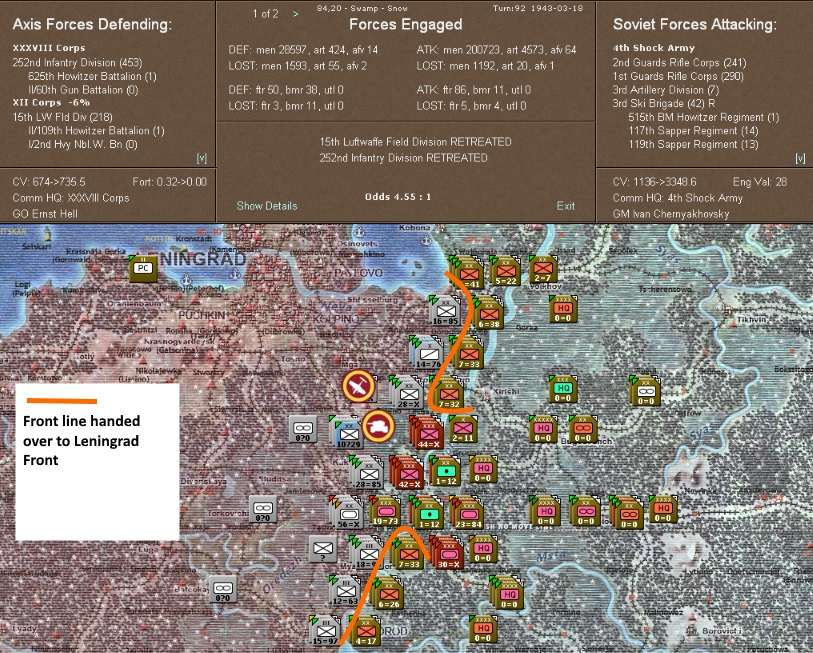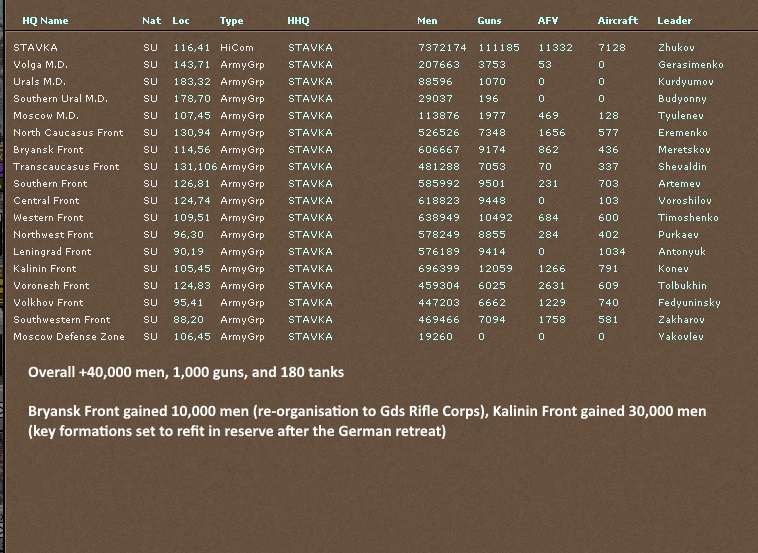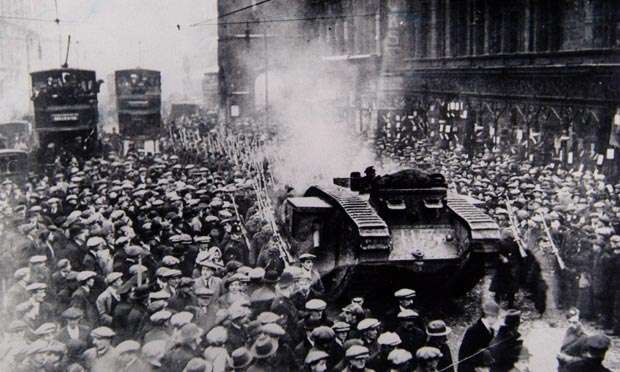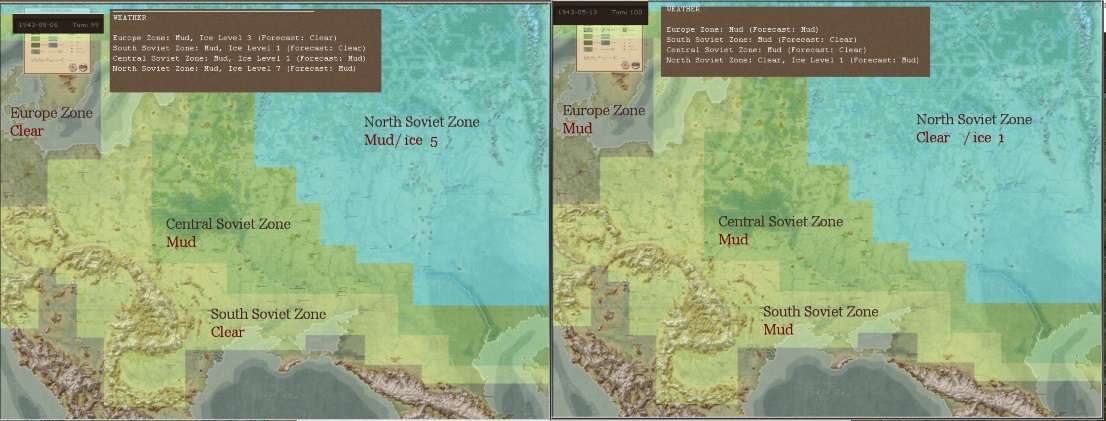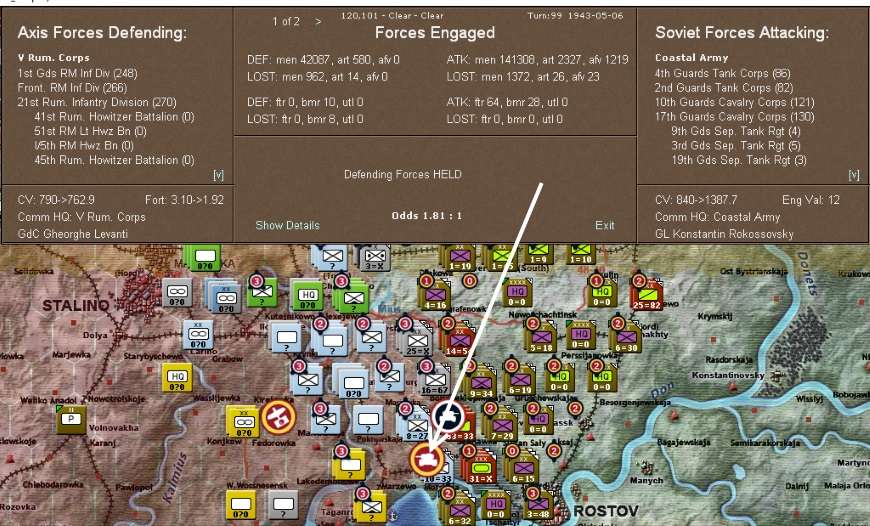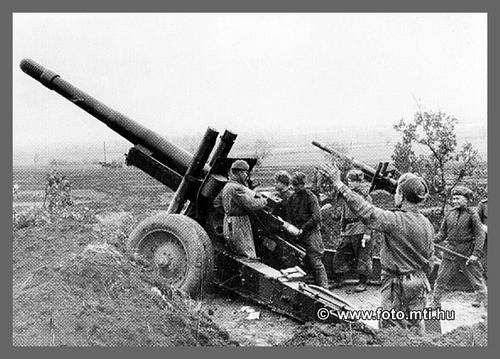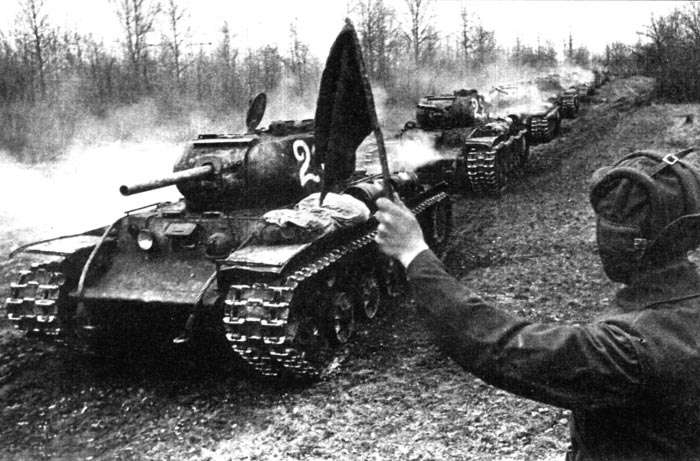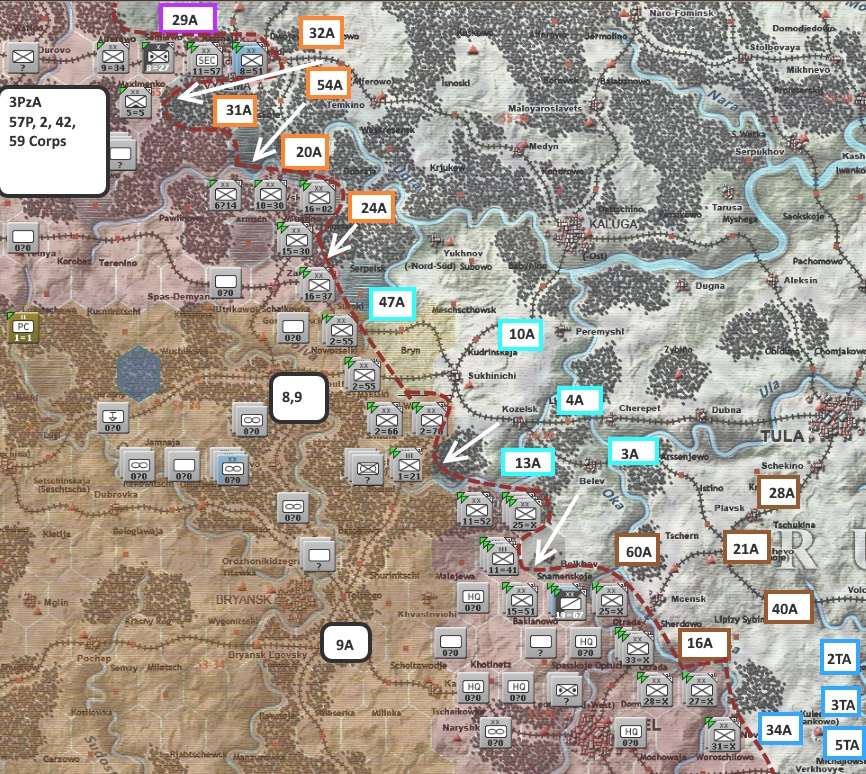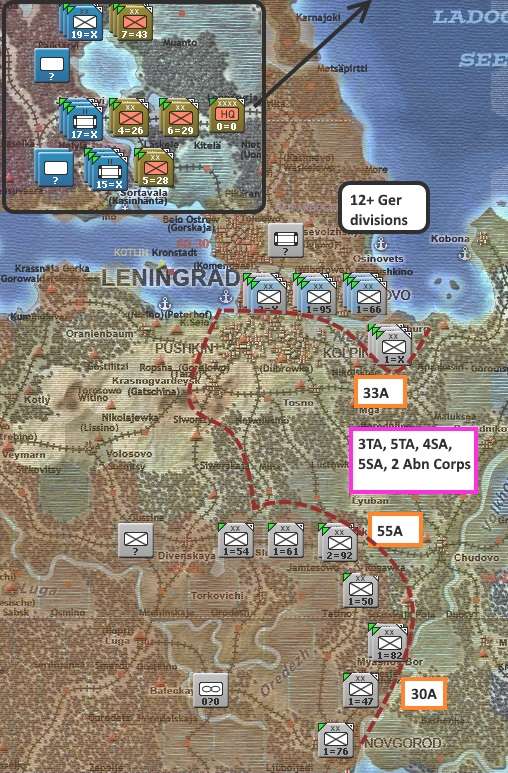Turn 93: 25 – 31 March 1943
The last week of March saw relatively limited fighting as both sides adapted to the likely end of winter conditions. In the south, the Germans launched another major set of attacks to drive the Soviets behind the Aidar and to break open the pocked east of Voroshilovgrad. Soviet commanders were content to restore the encirclement and elsewhere went over to the defensive.
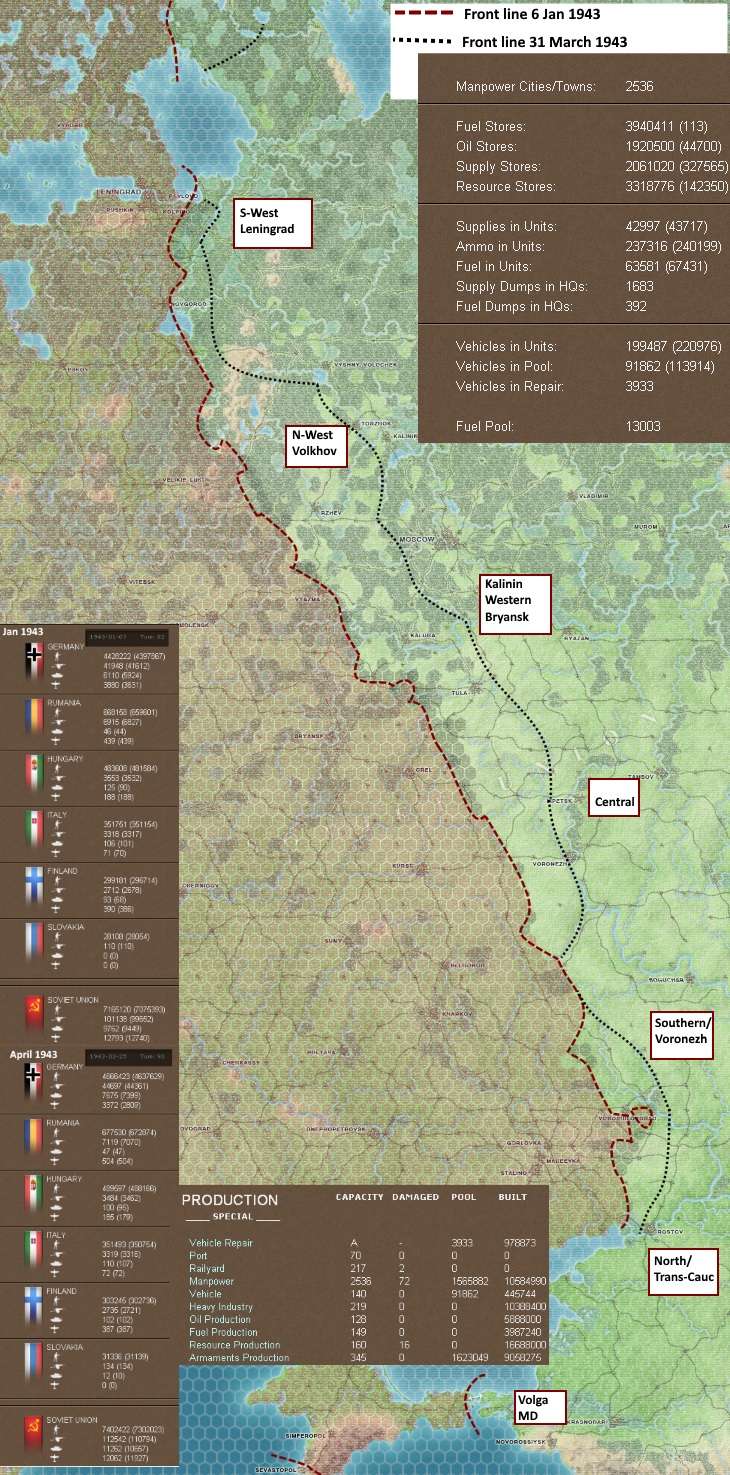
(ok have noticed I've messed up the description, as you maybe able to guess the front lines are the other way around)
Apart from some fighting in the Valdai, this effectively marked the end of the three major Soviet winter offensives. Two of these had developed without prior planning.
The counter-attack at Rostov commenced in
late November primarily to try to force the Germans to remove formations from their Ryazan offensive. It was not till early January that it became a wider offensive when 3 Tank Armies from the Voronezh Front (1, 2 and 4) were committed to the north of Voroshilovgrad. By early February the Germans had become increasingly worried at the Soviet gains and by early March it appeared as if the bulk of 3 Panzer Armies were in action.
By the end of March it was clear the Soviets were not going to be able to make any more gains towards the Dombas. However, the fierce struggle over the Voroshilovgrad pocket was not yet resolved.
At Moscow, operation
термит had also commenced in an attempt to draw off German forces at Ryazan. At times involving 4 Soviet Fronts, this had opened with no geographical goals. Early gains were minimal, but gradually Kalinin Front in particular made steady gains. In the end, three major cities had been liberated (Rzhev, Kaluga and Tula) and the Germans had been pushed back over 100 miles from Moscow.
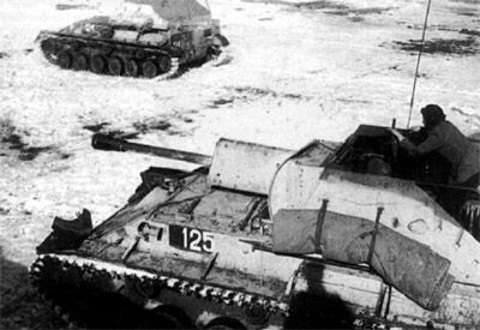
(SU-76s in action near Kaluga [1])
In the north, January had opened with the Germans on the offensive and making steady progress around Lake Ilmen. By
20 January they were threatening Vyshny Volochek, Torzhok and Kalinin even as Soviet resistance east of Ilmen intensified. The
Смольный offensive developed out of this defensive victory and was the only one that was planned from the outset. However, despite massive artillery support and the use of some of the elite formations in the Red Army by the end of March the front line was a maximum of 20 km west of the Volkhov river.

----------------------------------------------------------------------------------------------------------------
Some comments on losses etc.
As is obvious I've paid a high price in destroyed tanks for limited gains.
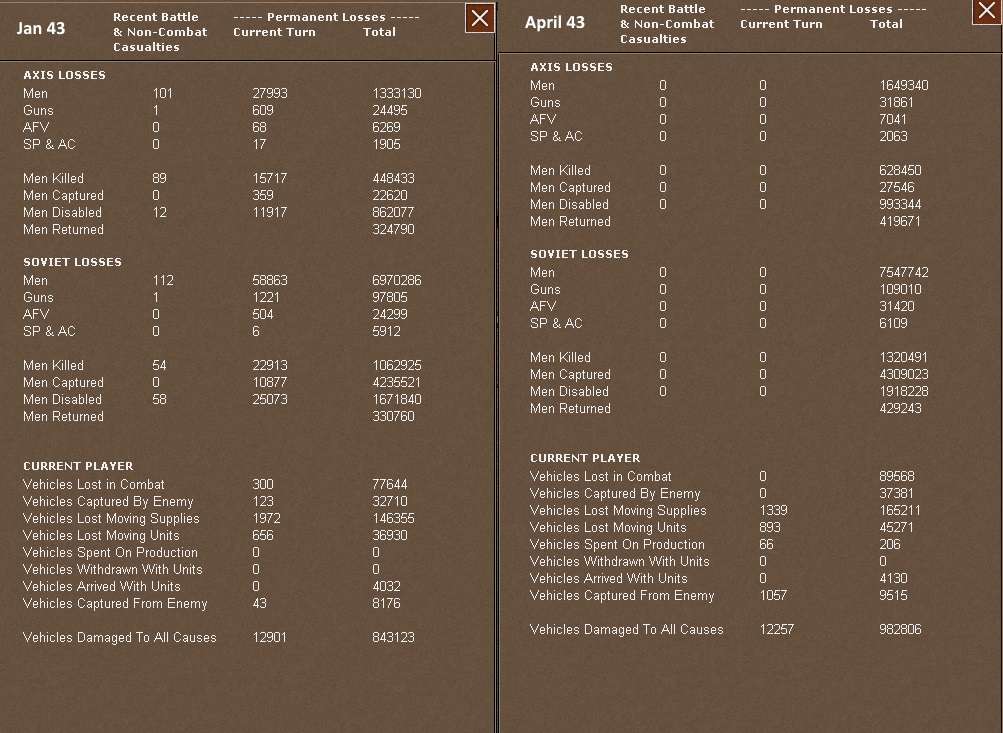
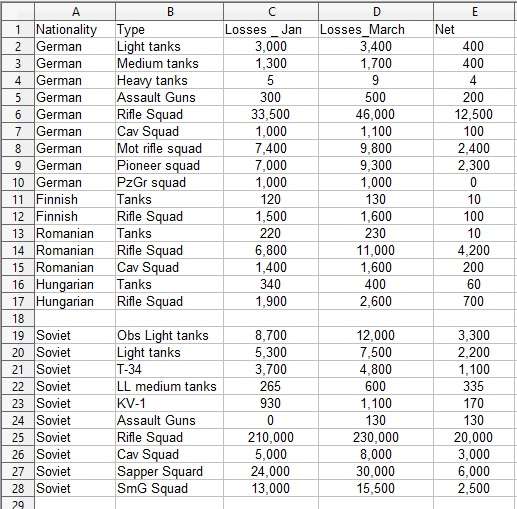
But digging in a bit its not as bad as it looks. I've effectively emptied my pool of T-26s etc as out of 7,000 lost AFVs, 3,300 were obsolete in any case. Another 2,200 were modern light tanks (T-60/T-70/Stuarts). Even so, I have taken heavy losses in T-34s.
This provides a bit more information. No idea how serious any of the German losses are but have destroyed a lot of Pz-IVs.
Looking at infantry losses, the situation is better for me. I've lost around 25,000 combat (rifle, smg, cavalry) squads and the Germans 15,000.
Soviet army is starting its evolution to an offensive force.

Far more rifle corps (almost all Guards) and a few more yet to be formed. Due to the losses in medium tanks, I've built quite a lot of Gds Heavy tank regiments. The KV-1 is not that useful but they otherwise sit in the pool and it reduces the demands on my T-34s. The formations will switch to IS-2s in 1944 and will have high experience and morale.
Some of the brigades are ski formations. I've found these useful as they easily have a cv of 3 (when most rifle divisions are at 2) and as brigades are good for reserve re-actions. Bit of a short term bonus as they are pretty useless after the end of winter.
Perhaps the main change is the increase in artillery.
This gives some idea of the evolution of the Red Army since June 1942 (in these tables all the fixed units are excluded).

Despite large reinforcements, my infantry have never recovered from the losses during the 40NM period. In June 1942 I had the equivalent of 500 divisions, even now its just under 400. I've not really gained that many armoured formations either.
In the air, have pulled all the Yak-1s (and earlier models from the front). All level bombers are in reserve (very little use under the current rule set).

(Lend Lease P-39s[2])
[1] For complete trivia, while looking around I found a photograph of SU-76s in service with the Afghan army in the late 1960s.
[2] As a further aside, hadn't realised just how much the VVS liked the P-39. So went off to check out the stats and the 1943 versions are pretty good – probably better than the 1943 P-40s.










